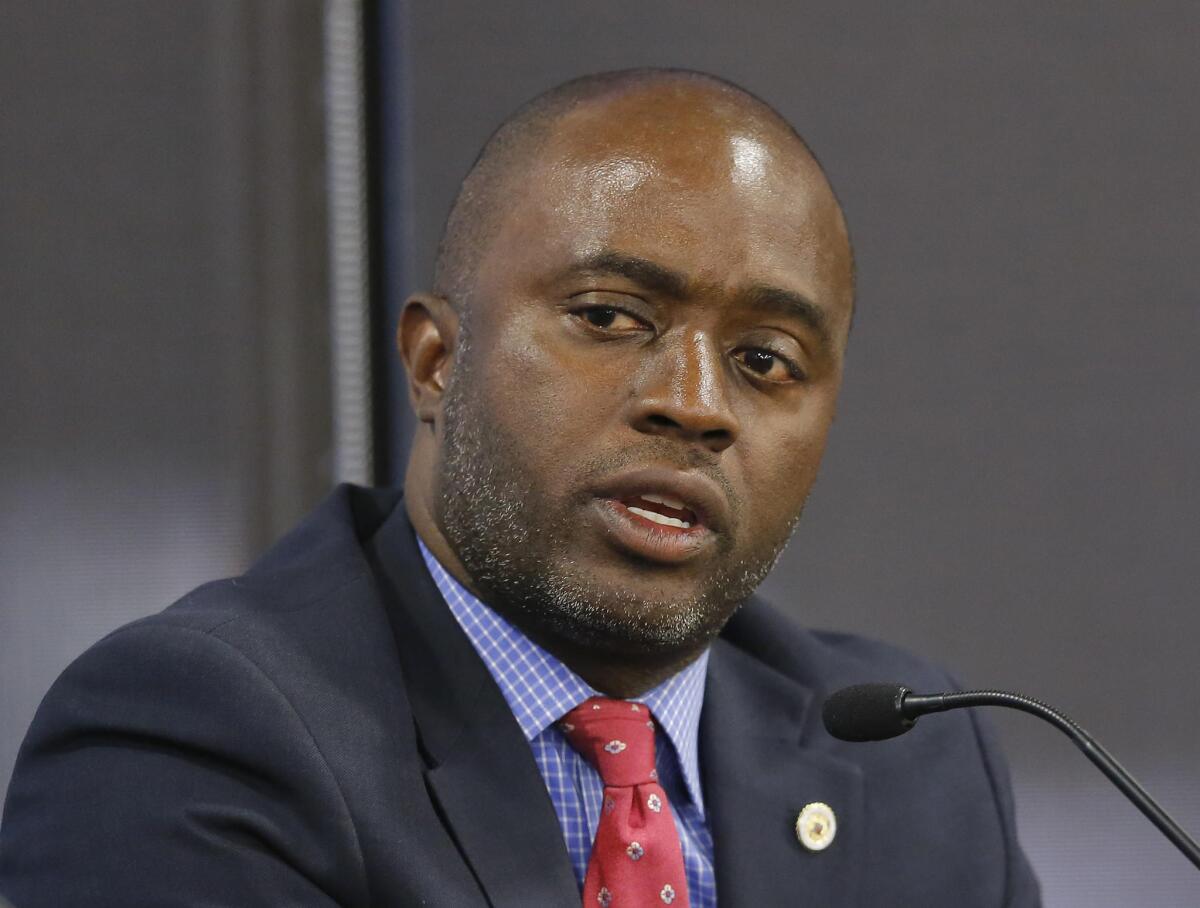Editorial: California’s ethnic studies curriculum is controversial and a little sloppy — but much improved

- Share via
Now in its third draft, California’s model ethnic studies curriculum for high schools has been stripped of its narrow ideological lens, its divisive victimization narratives and even its impenetrable academic jargon (e.g., “misogynoir” and “cisheteropatriarchy”). Also gone are the phrases equating capitalism with racism and the glowing, one-sided description of the controversial Boycott, Divest and Sanction movement against Israel. It wisely emphasizes more independent research and critical thinking by students.
Of course, various interest groups, including Arab and Jewish associations, have registered objections to the new draft, which state schools Supt. Tony Thurmond requested last year. Several of the original authors, meanwhile, have said they want their names taken off the document, considering it a watered-down version of the more fiery curriculum they had favored. Racial and ethnic issues are bound to ignite passionate disagreement, which is fine. In fact, that’s one of the most important reasons why students should be taught this subject in the first place.
Overall, the drafters made the smart decision not to try to please everyone with the new version, and instead stuck almost solely to the four groups that are traditionally included in such courses and that have fared the worst under racism: Black, Latino, Asian and Native Americans. If the state ever passes legislation that would require ethnic studies to be taught in high schools — the controversy over the curriculum has stopped that so far — a course that tries to cover every group that has suffered prejudice would be too shallow to teach students much about this very deep subject.
For all these improvements, however, the new version isn’t ready to ship out, which is a shame, because the state Board of Education is required to approve something by the end of the month. It will either have to ask for some very quick rewriting or seek an extension from the Legislature, which it’s gotten before.
Curiously, one of the problems is that the drafters appear to have bent over backwards in a couple of areas to appease critics. Of the 563 pages of sample lessons — the cornerstone of the curriculum — more than 100 are devoted to the experiences of Korean Americans, a group that had fought for more representation in the document. More attention is fine, but this one group has far more space allotted to it than Black, Latino or Native Americans, which implies that those groups are worth less time and attention. The material on Asians and Pacific Islanders dominates the lesson plans, with sections on many different nationalities within that group adding up to more than 300 pages.
Meanwhile, the Native American section simply tells teachers that they can look up information on various tribes. There is one lesson on sacred sites, using the shellmounds of the Ohlone Indians as the example, but nothing about how many California Indian cultures were virtually erased under the mission system and how those groups later could not win recognition as tribes on the grounds that they no longer had unique cultures.
Although systemic racism is mentioned as an issue, there are no real lessons on it, which appears to be a glaring oversight. The ways in which historic racism and poverty have affected opportunity for people of color, and given advantage largely to white people, is at the root of such topics as affirmative action, police brutality, college admission, career opportunity and educational equity — topical issues of extreme importance to teenagers. White privilege is mentioned mainly as something that American Jews have enjoyed at times, a strange way to tackle the issue.
Schools don’t have to use the model curriculum, which offers a menu of pick-and-choose options. That might offer freedom, but it also could lead to confusion and wide disparities in the quality of ethnic studies, especially when the sample lessons are so uneven in depth. Many of the sample lessons are rich in material and rigorous in the work that they require from students. But teachers will bear the extra burden of transforming all this information into a coherent course. Some of the material might be better taught as parts of other courses — why not teach more Asian and African history in world history courses, Latino and Native American literature and culture in language and art classes, and the like?
The effort is on the right track for the most part, but it’s worth taking the time to do this well. The end result should be a document that puts fair emphasis on each group and that can be used easily by schools. Ethnic studies shouldn’t be just a one-semester course, but an integral part of the California educational experience.
More to Read
A cure for the common opinion
Get thought-provoking perspectives with our weekly newsletter.
You may occasionally receive promotional content from the Los Angeles Times.










